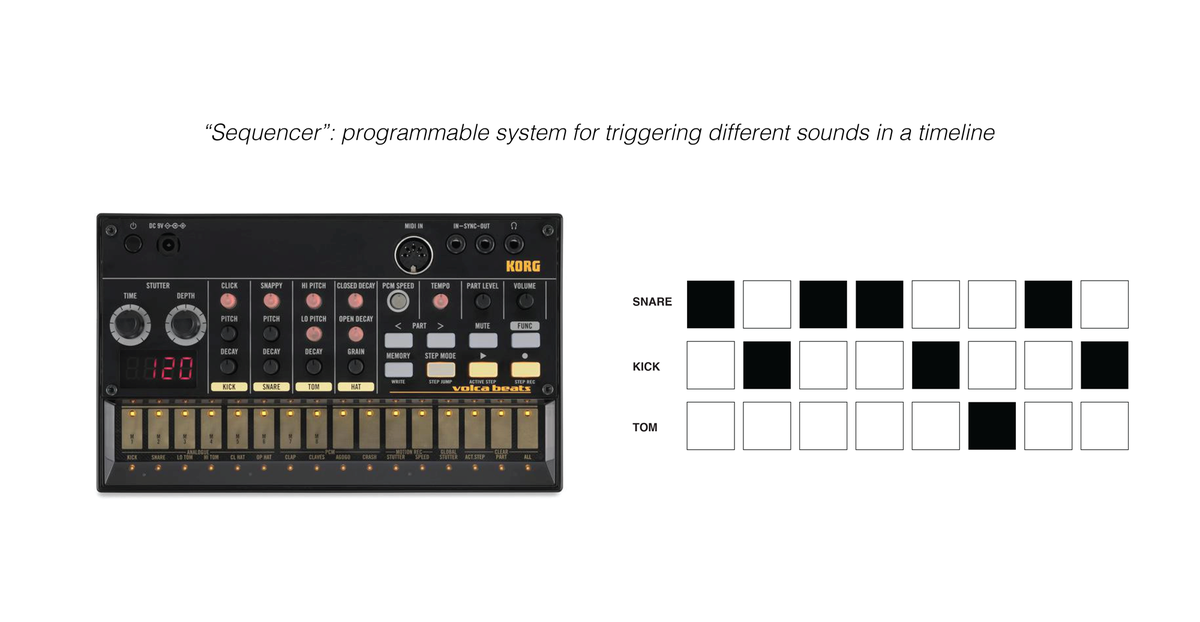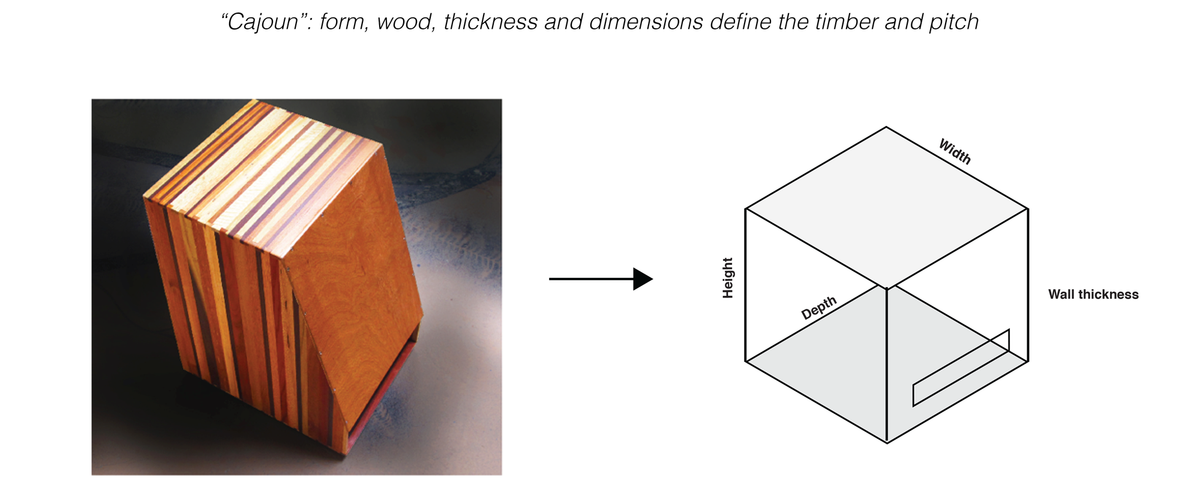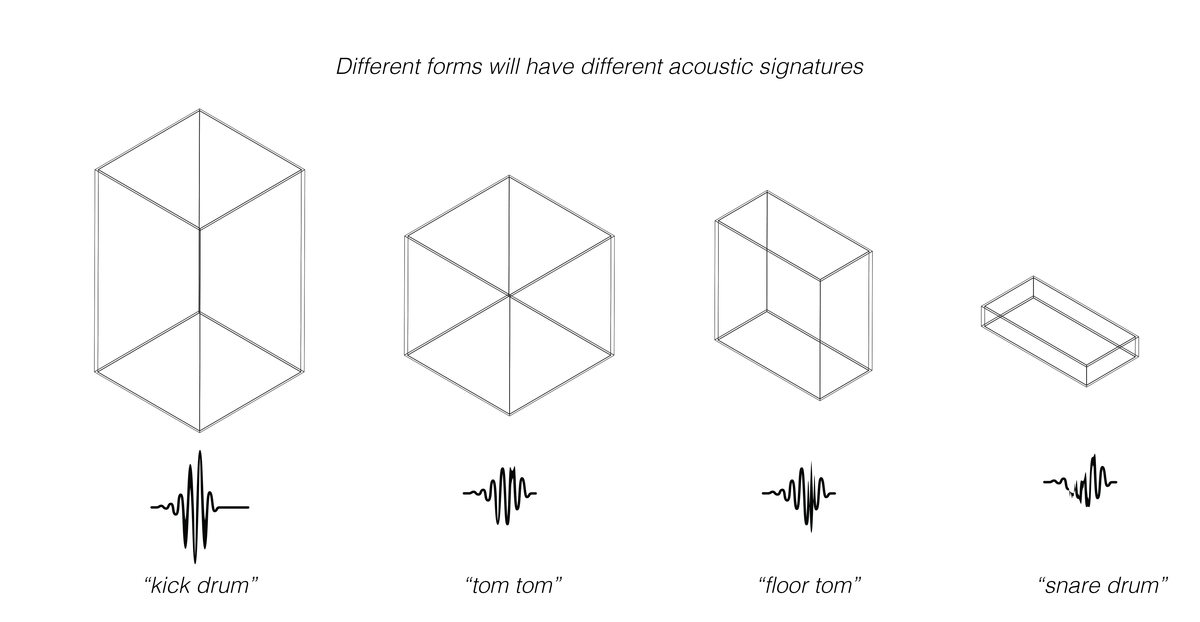Week 0: Final Project Concepting
For my project I decided to create a "Physical Sequencer", a modular device that combines the programmatic logic of a Drum Sequencer (TR808 or Volca Beats) with the analog qualities of a percurssive instrument called the Cajoun. My inspiration comes from the sound artist Zimoun, that creates large scale sound installations by duplicating a very simple mechanism with a resonating enclosure. The limitation to his work is that the sound generated almost happens randomly whereas my desire is to be able to program a sequence.
Inspiration

The idea is to create a program that the user can input a sequence very much like they would do on an synthesizer sequencer by adding triggers to a timeline based on a pre selected number of instruments. The sketch below shows the family of objects generated by the sequence on the left of the sketch.
Concept


After the sequence is created, based on the pitch and timber selected by the user we model the design of a physical resonating box (similar to the Cajoun) and by varying the width, height, depth and wall thickness parametrically we generate a box with that desired sound.

Learning from Mistakes
All boxes carry one common element which is the drumstick that is attached to a solenoid and programmed to trigger that resonating box at the correct point in the sequence (based on the user selections on the sequencer step). Given the dimensions of each enclosure are different, it would have different acoustic signatures, enabling the user to map the digital representation of that sound to a physical object.

The result is a physical sequence made up of modular units that can be fabricated out of cardboard or wood based on the parametric dimensions exported by the software. Ideally the UI could also export a program that drives the sequencial order of the motors.
Modeling
To model the the objects I created a parametric model of a cube that I could change the following parameters (image below) and a common component that is the pedal head and mechanism.
 The result is a family of 'sounding objects'. For this assignment I first conceived the idea by sketching some thoughts and mechanisms. The video below shows the different cube dimensions based on parametric CAD modelling. These cubes can then be re-arranged by people to change the way that the sequencer works.
The result is a family of 'sounding objects'. For this assignment I first conceived the idea by sketching some thoughts and mechanisms. The video below shows the different cube dimensions based on parametric CAD modelling. These cubes can then be re-arranged by people to change the way that the sequencer works.
